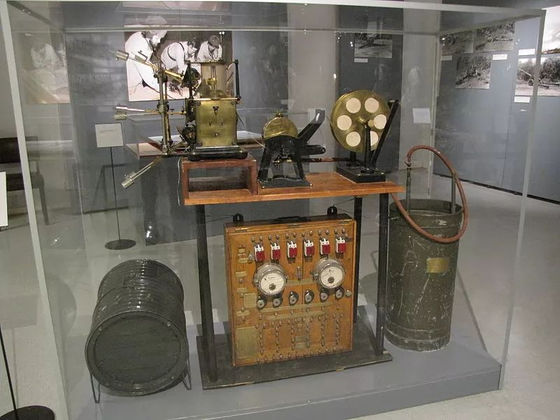When reproducing the moment of the end of World War I with `` one minute sound '' from gunshots recorded 100 years ago, it looks like this

To celebrate the 100th anniversary of the end of
Making a New World: Armistice Soundwave-Coda to Coda
https://codatocoda.com/blog/making-a-new-world-armistice-soundwave/
Listen to the Moment the Guns Fell Silent, Ending World War I | Smart News | Smithsonian Magazine
https://www.smithsonianmag.com/smart-news/listen-moment-guns-fell-silent-ending-world-war-i-180970772/
Approximately 37 million people have been victims of the war, and one of the largest wars in history, World War I, has virtually ended with the end of the German-Allied Armistice Agreement in November 1918 That of the month 11. This day has been set as a national holiday in many of Europe's main battlefields and is remembered as the end of an unprecedented war.
And the following is 'WW1 Armistice Interpretation' which reproduced the end of World War I with sound. When played, the sound of the intense fire gradually becomes sparse, and you can hear the sound of peace coming in a minute.
This work is not just an image, but uses sounds reproduced from the actual material 'THE END OF THE WAR' stored at IWM.

In 1918, magnetic tapes did not yet exist, and recording required a device like a phonograph that carved sound into soft resin or metal with a needle. Of course, bringing such a device to the battlefield wasn't realistic, but techniques were being developed to record sound as lines written on film.
That's

The above-mentioned 'THE END OF THE WAR' is said to have been recorded at 10:58 am on November 11, 1918 with this sound source ranging. In addition, several factors are involved in the problem of 'I understand that the war is over at 11 o'clock, but why did the artillery continue until 10:58?' The main reason is that the Allied Army the carrying in order to have hated to go home, '' If the battle superiority stand for in 'when it is resumed
The last casualties in World War I battles are allegedly U.S. Private Henry Gunther . Gunther had been demoted before the end of the war, and had been rushed to catch up, so he fired a bayonet at the German army without listening to the orders given by his best friend, Sergeant Ernest Powell. He was shot dead by a German machine gun 60 seconds before the truce was triggered. Ironically, Gunther has been promoted from private to the rank of sergeant before relegation due to the death.

by Concord
Coda to Coda, a music studio that created `` WW1 Armistice Interpretation '' at the request of IWM, said, `` The material obtained from the IWM collection is how intense the gunshot for soldiers fighting on the Western Front , chaos Tells you what it was. We hope that WW1 Armistice Interpretation will help you remember the moment of the end of World War I and find out what kind of sound it was. '
Related Posts:
in Note, Posted by log1l_ks







